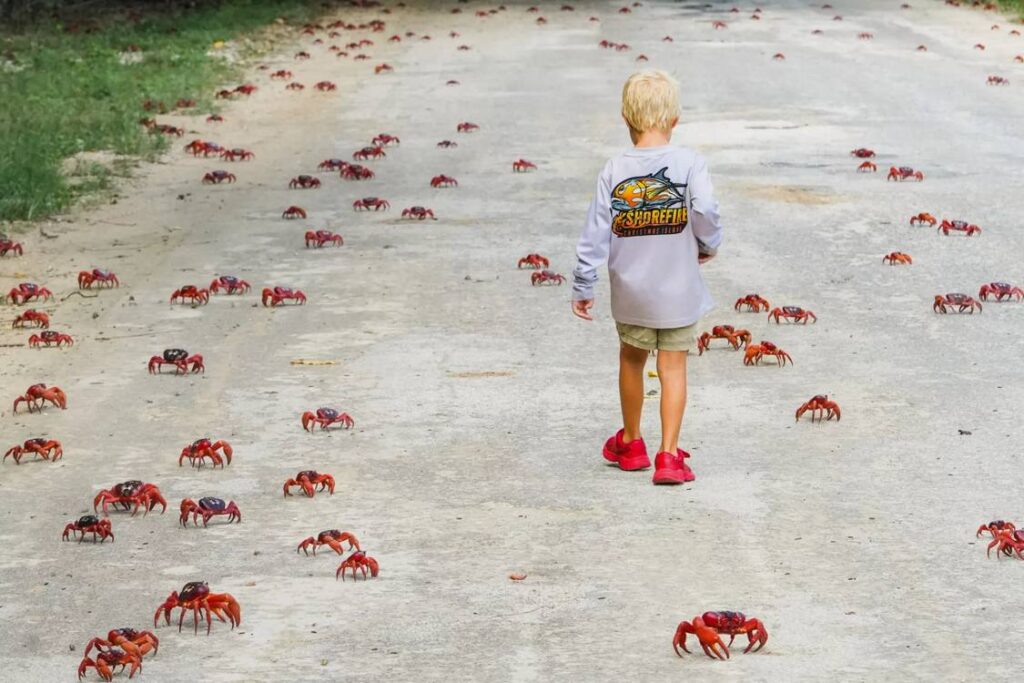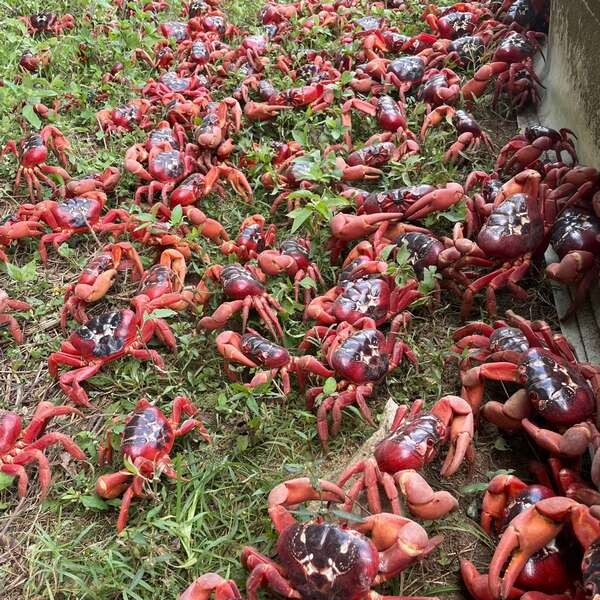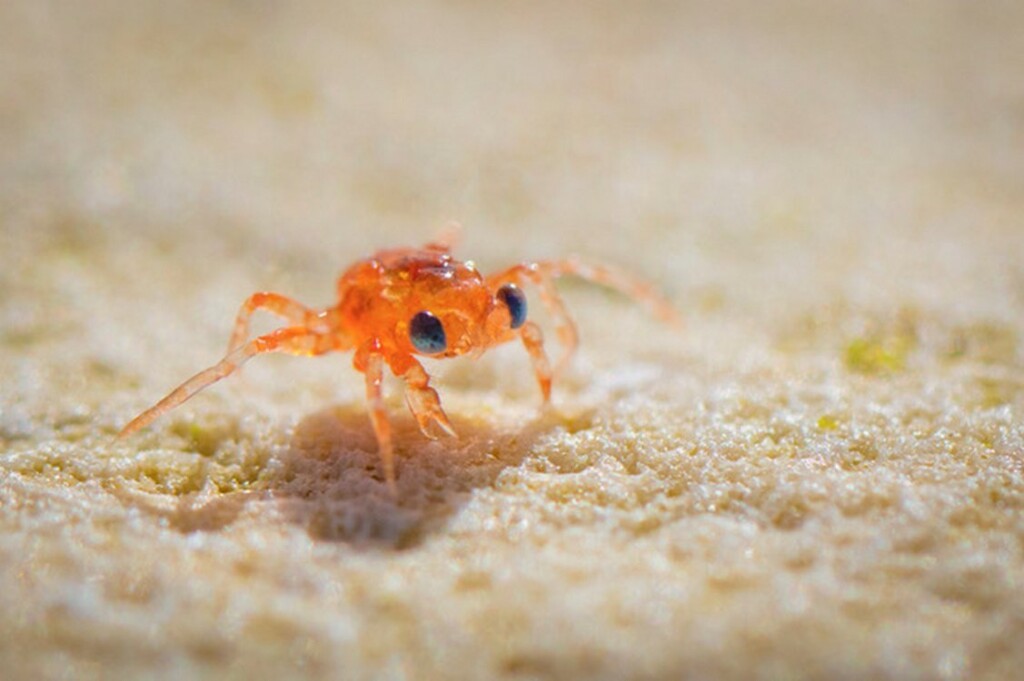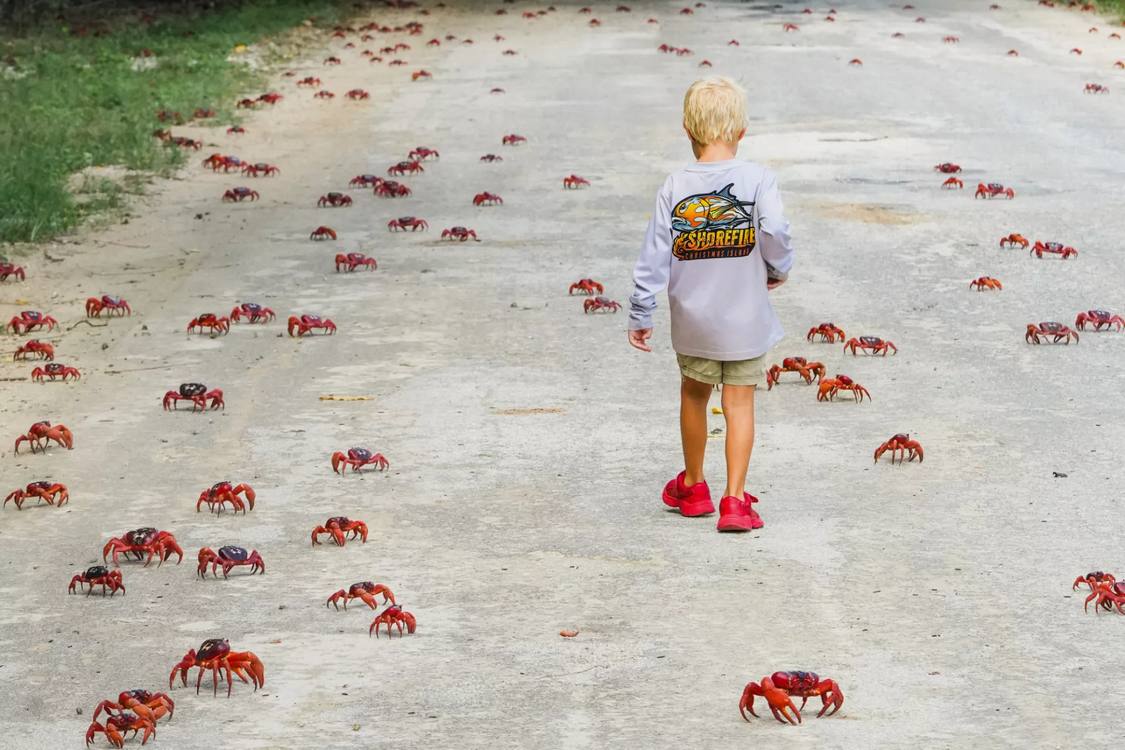 A boy walks through the crabs – credit, Parks Australia, via AP
A boy walks through the crabs – credit, Parks Australia, via AP
Every November, the 1,200 denizens of Australia’s Christmas Island break out the rake and leaf blower and head out to their yards, driveways, and sidewalks.
It’s not dead oak and beech leaves on their minds, however, but another red-tinted carpet—100 million crimson-colored crabs.
Outnumbering their human neighbors 100,000 to 1, the Gecarcoidea natalis or Christmas Island red crab produces of the our planet’s most spectacular migrations: a 100 million-man march of epic proportions.
For the locals, it takes a bit of patience and a bit of perspective to get through the late October-November breeding period, when the crabs emerge from their forest burrows and travel to the island’s beaches.
“Some people might think they’re a nuisance, but most of us think they’re a bit of a privilege to experience. They’re indiscriminate. So whatever they need to get over to get to the shore, they will go over it,” said Christmas Island National Park acting manager Alexia Jankowski, who told AP that despite being just 52 square miles, the island is estimated to contain 200 million of these crabs.
With the summer rains in the Southern Hemisphere acting as the starting pistol last weekend, the islanders buckled up for disruptions in their day-to-day lives that have to be seen to be believed.
 The scope of the migration – credit, Parks Australia, via AP
The scope of the migration – credit, Parks Australia, via AP
“Some people, if they need to drive their car out of the driveway in the morning, they’ve got to rake themselves out or they’re not going to be able to leave the house without injuring crabs,” Jankowski said.
During crustacean rush hour taking place in the early morning and early evening when the heat of the Indian Ocean sun is more manageable, road closures, home and garden invasions, and other such disruptions become common place.
The tough exoskeleton of the crabs can actually puncture car tires, so automotive prudence and neighborly compassion pay off for the humans who share the island. Park rangers help funnel the crabs to choke points or B-roads that can be blocked from traffic, while 5-meter high “crab bridges” allow the migrants to scale over the larger thoroughfares and descend safely to the other side.
Some residents will put on specially-designed “crab plows” which present as rubber half-moons in front of every wheel that gently push the migrants out of the way.
OTHER STUNNING GATHERINGS: Record Number of 736,000 Sandhill Cranes Flock to Nebraska in Spring Migration–with No Bird Flu
Once on the shores, male crabs dig burrows where females will lay their eggs. Hatching on November 14-15, the larvae ride the surf and tides before returning to the island as miniature crabs called ‘megalopae’ in late December, just in time for Christmas.
 A Christmas Island crab in its ‘megalopa’ stage – credit, Christopher Andrew Bray and Son, CC 4.0. BY-SA
A Christmas Island crab in its ‘megalopa’ stage – credit, Christopher Andrew Bray and Son, CC 4.0. BY-SA
By then, Christmas Islanders again seek to harmonize with their neighbors—using leaf blowers to push the returning baby crabs, each the size of a sunflower seed and too delicate for the rakes, safely across the roads, beaches, and trails.
MORE STORIES LIKE THIS: Watch Sheep Fill the Streets of Madrid On Annual Migration of Shepherds
With a little compassion and appreciation for the wonder of nature they get to witness year-in, year-out, the residents of Christmas Island have forged a lasting friendship with the inedible crabs.
This isn’t the only community that has to deal with hatchlings passing through their homes and gardens.
Some years ago, a Connecticut dry cleaners realized their store was smack dab in the middle of a turtle migration route, and now every year from May through September, job responsibilities shift from cleaning and pressing clothes to cleaning and pressing clothes and picking up turtles.
WATCH some footage below…
SHARE This Wild Way To Enjoy Fall With Your Friends On Social Media…

